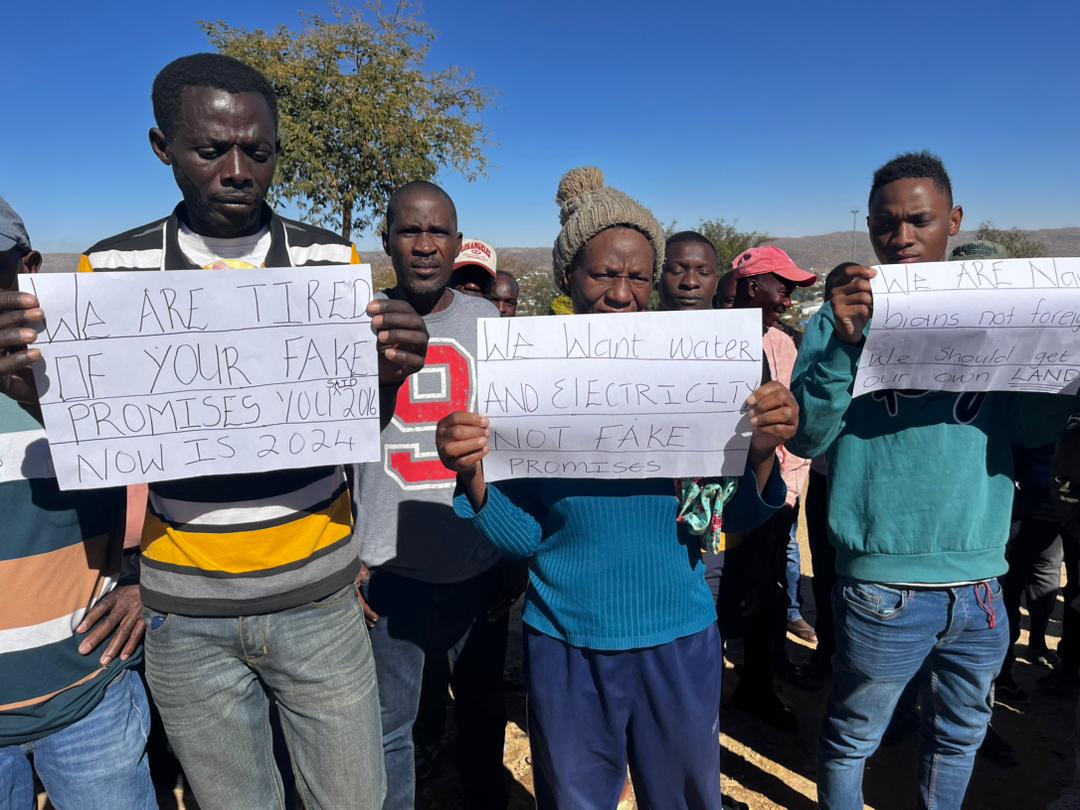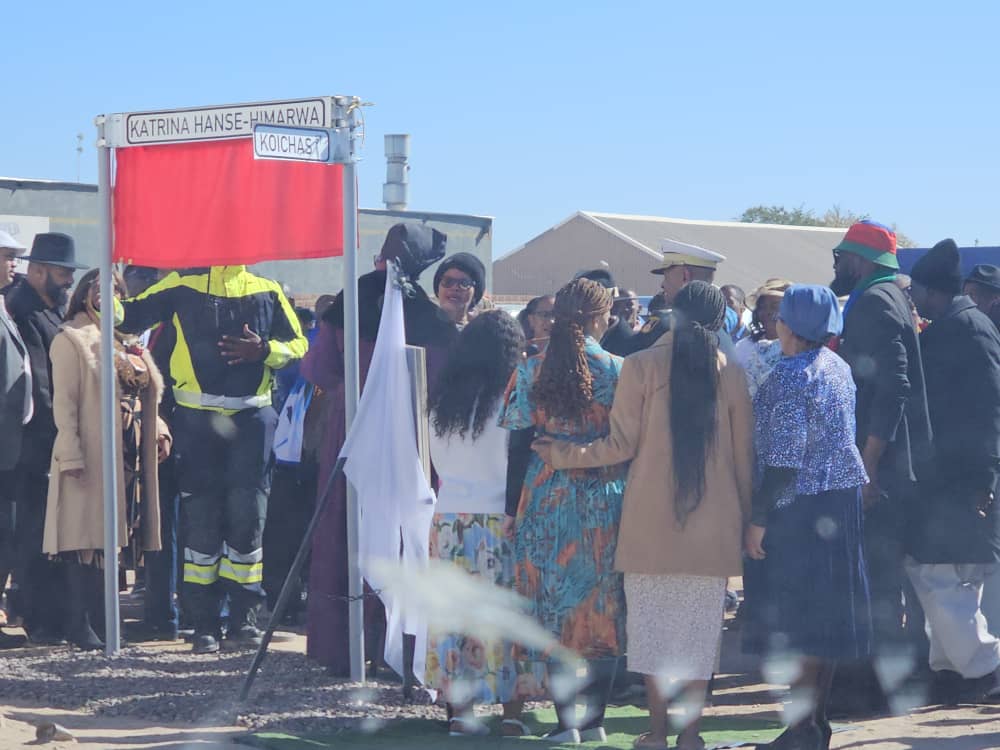NAMIBIANS, as individuals and as a collective whole, are well acquainted with the devastating impacts of droughts, floods and other natural disasters.
To raise awareness about disaster risk reduction on a worldwide scale, the international community celebrates the International Day for Disaster Reduction today, October 10. Disaster risk reduction is intrinsically tied to two other key issues in Namibian current affairs: sustainable development and climate change.Implementation of sustainable development is crucial in order to minimise the impact of natural disasters in Namibia.However, any serious sustainable development planning must adopt a holistic perspective that looks not only at current conditions and short-term goals, but also incorporates anticipated future impacts of climate change.Will Namibians be able to rely on specific resources in the face of climate change? Will future conditions exacerbate poverty and make Namibians less able to adapt to future natural disasters and environmental extremes? What does it take to improve the people’s resilience to changes in the natural environment? These questions, and many others, must be answered to achieve sustainable development planning today.The 4th Annual Report by the Intergovernmental Panel of Climate Change highlights southern Africa as vulnerable to the impacts of climate change; the international community has turned its attention to the region with the hopes of increasing resilience in the face of these issues.Just last week, the United Kingdom’s Department for International Development (DFID) facilitated a two-day workshop with 22 Namibian representatives from nine different public, private and non-government institutions in order to determine how it could assist and encourage Namibia to respond to the challenge of climate change.A recurring theme of the workshop was the importance of incorporating climate change into current development plans in the various sectors.The discussions explored means to include climate change in the long-term perspective of key development issues such as poverty alleviation, economic growth, resource management, food security, sustainable urbanisation, biodiversity and, last but not least, the timely topic of disaster management.Stakeholder presentations at the DFID workshop discussed the most recent climate change projections for Namibia.Computer models that predict the potential future effect of climate change show that there will be widespread warming across Namibia in the next 40 years.This increase in temperature will be highest in the inland regions of the country.These projections correspond with recent climate records that show that throughout the country the lowest and highest temperatures are already getting warmer.Rainfall projections are harder to come by as Namibia’s natural climatic variability makes even historical rainfall trends difficult to interpret.Here, climate change models often give conflicting projections and inconclusive results.However, some more reliable projections do stand out from the uncertainty: the rainy season is expected to start later and end earlier, the coastal regions will receive more rain between January and March, and the south-western region will be drier.There is consensus that future dry seasons will be longer, but the models do not agree on how much rain there will be overall, or how often rainstorms will occur, although it is expected that the number of high-intensity rainfall events will increase.Despite these debates and uncertainties, scientists do agree that climate change is real and is already manifesting itself in one way or another.The above-mentioned changes have a number of dramatic implications for Namibia and Namibians.Increased temperatures and changes in rainfall patterns may lead to a lower availability of water for consumption.A delayed rainfall season and extended dry season will accentuate the negative impacts of drought; a change in agricultural production, and perhaps the loss of some production will directly threaten local livelihoods.Human health will be jeopardised due to heat stress from rising temperatures, and the increase in occurrences of insect-borne diseases.Additionally, the combined changes of water availability, increased evaporation, and increased temperatures will stress the environment and perhaps lead to the loss of significant biodiversity.The theme of the 2007 International Day of Disaster Reduction is ‘Safer schools and disaster risk reduction education’.We can all benefit from learning more about the future impacts of climate change, and how we can account for these risks in our individual and national planning.Scientists do not claim to be able to predict exactly how much rain any given village will receive in precisely the year 2048, but they are sending a very clear message: Namibia will face higher temperatures, an increasingly variable rainfall season, and a higher risk of disasters, such as droughts and floods.To address these issues at the national level, Namibia needs to adopt a collaborative cross-sectoral approach with a long-term perspective that explicitly takes the effects of climate change into account.In doing so, Namibia will also take many strides in the right direction towards disaster risk reduction.* Julia Bradley-Cook is attached to the Desert Research Foundation of Namibia.Disaster risk reduction is intrinsically tied to two other key issues in Namibian current affairs: sustainable development and climate change.Implementation of sustainable development is crucial in order to minimise the impact of natural disasters in Namibia.However, any serious sustainable development planning must adopt a holistic perspective that looks not only at current conditions and short-term goals, but also incorporates anticipated future impacts of climate change.Will Namibians be able to rely on specific resources in the face of climate change? Will future conditions exacerbate poverty and make Namibians less able to adapt to future natural disasters and environmental extremes? What does it take to improve the people’s resilience to changes in the natural environment? These questions, and many others, must be answered to achieve sustainable development planning today.The 4th Annual Report by the Intergovernmental Panel of Climate Change highlights southern Africa as vulnerable to the impacts of climate change; the international community has turned its attention to the region with the hopes of increasing resilience in the face of these issues.Just last week, the United Kingdom’s Department for International Development (DFID) facilitated a two-day workshop with 22 Namibian representatives from nine different public, private and non-government institutions in order to determine how it could assist and encourage Namibia to respond to the challenge of climate change.A recurring theme of the workshop was the importance of incorporating climate change into current development plans in the various sectors.The discussions explored means to include climate change in the long-term perspective of key development issues such as poverty alleviation, economic growth, resource management, food security, sustainable urbanisation, biodiversity and, last but not least, the timely topic of disaster management.Stakeholder presentations at the DFID workshop discussed the most recent climate change projections for Namibia.Computer models that predict the potential future effect of climate change show that there will be widespread warming across Namibia in the next 40 years.This increase in temperature will be highest in the inland regions of the country.These projections correspond with recent climate records that show that throughout the country the lowest and highest temperatures are already getting warmer.Rainfall projections are harder to come by as Namibia’s natural climatic variability makes even historical rainfall trends difficult to interpret.Here, climate change models often give conflicting projections and inconclusive results.However, some more reliable projections do stand out from the uncertainty: the rainy season is expected to start later and end earlier, the coastal regions will receive more rain between January and March, and the south-western region will be drier.There is consensus that future dry seasons will be longer, but the models do not agree on how much rain there will be overall, or how often rainstorms will occur, although it is expected that the number of high-intensity rainfall events will increase.Despite these debates and uncertainties, scientists do agree that climate change is real and is already manifesting itself in one way or another.The above-mentioned changes have a number of dramatic implications for Namibia and Namibians.Increased temperatures and changes in rainfall patterns may lead to a lower availability of water for consumption.A delayed rainfall season and extended dry season will accentuate the negative impacts of drought; a change in agricultural production, and perhaps the loss of some production will directly threaten local livelihoods.Human health will be jeopardised due to heat stress from rising temperatures, and the increase in occurrences of insect-borne diseases.Additionally, the combined changes of water availability, increased evaporation, and increased temperatures will stress the environment and perhaps lead to the loss of significant biodiversity.The theme of the 2007 International Day of Disaster Reduction is ‘Safer schools and disaster risk reduction education’.We can all benefit from learning more about the future impacts of climate change, and how we can account for these risks in our individual and national planning.Scientists do not claim to be able to predict exactly how much rain any given village will receive in precisely the year 2048, but they are sending a very clear message: Namibia will face higher temperatures, an increasingly variable rainfall season, and a higher risk of disasters, such as droughts and floods.To address these issues at the national level, Namibia needs to adopt a collaborative cross-sectoral approach with a long-term perspective that explicitly takes the effects of climate change into account.In doing so, Namibia will also take many strides in the right direction towards disaster risk reduction. * Julia Bradley-Cook is attached to the Desert Research Foundation of Namibia.
Stay informed with The Namibian – your source for credible journalism. Get in-depth reporting and opinions for
only N$85 a month. Invest in journalism, invest in democracy –
Subscribe Now!






